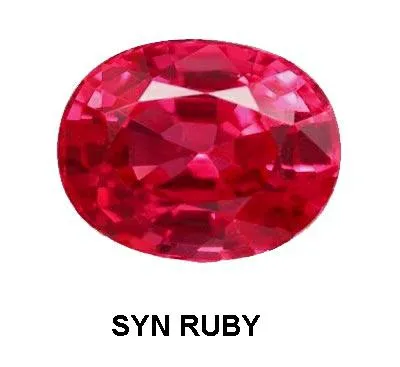
Synthetic assets are often just as good, or even better, than the real thing. When someone looks at a lab grown diamond or ruby under a microscope, they can tell it's fake because it is "too perfect" in structure and was obviously not created by the pressure/heat of tectonic plates and whatnot in the Earth's crust. Isn't it funny how the flawed nature of certain assets is the thing that gives them value and makes them unique?
Derivatives can be more valuable than the asset they represent
People accuse the gold and silver derivatives market of blatant manipulation and suppressing the price. The derivative controls the value of the real world asset. In our minds we decide that this game theory is wrong and clearly signals corruption and unsustainability.
To be fair, it probably is corrupt, unsustainable, manipulated, and all around ridiculous, but there is one thing many do not consider when it comes to digital assets representing physical assets in the real world. 'Paper' assets are convenient, and they are intrinsically connected to the internet.
The fact that one can buy or sell "gold" directly on the Internet is a huge advantage that is often overlooked by purists and "conspiracy theorists". Is the paper asset real? Nope. Could the peg from the paper asset break away from the real asset at any time? It can and does to varying degrees all the time. This is called a premium (costs more to buy the real thing).
However, the premium doesn't matter. No one cares because it is simply too convenient and valuable that the 'paper' asset can be utilized anywhere on the planet where there is an internet connection. This turns local markets into world markets, and the deepening liquidity pool of a world market is simply too valuable to ignore, making the fake asset more valuable than the real thing.

A year ago we were talking about Gold's market cap compared to Bitcoin (as if they are in competition) and we made a huge milestone when Bitcoin hit $1T MC and Gold was listed at $8T MC. Surely Gold's market cap will be sucked up by Bitcoin because Bitcoin is "Gold 2.0".
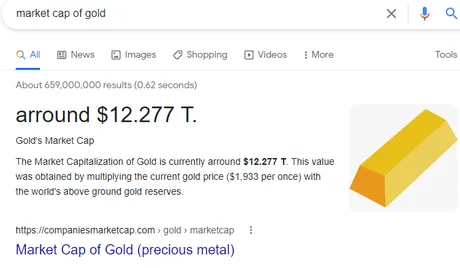
Now the market cap of gold has gone up over 50% since we were talking about $8T being sucked up into the $1T dollar market cap of Bitcoin. I've said it before and I'll say it again: Gold and Bitcoin compliment each other and do not compete. Gold, silver, and Bitcoin/crypto are all going to go up together. Precious metals are a robust and archaic way of storing value, which is exactly why Bitcoin compliments it so well. Bitcoin is an extremely inefficient and robust database that sacrifices efficiency in exchange for trust and security. Gold and silver feed into that paradigm perfectly. Bitcoin will not suck the market cap of gold and silver into itself; it will make their market caps larger. This is obvious to me. Watch and see.
But that is neither here nor there.
A week ago before I began my PolyFUD campaign @khaleelkazi was talking to me in DMs about a derivative asset that perhaps Polycub could create in order to avoid loaning out USDC directly to the community. He wanted me to help run some game theory on this concept, and it is a weird concept so it took me a while to wrap my head around. The conclusions I've come to are... interesting.

Creating a bridge with fake tokens.
It all started 16 days ago when I Polygon was down on Mandala exchange and I had to use a decentralized bridge. I opted to go for one that I had saved in my browser (someone had recommended it a while back) that I had never used before: https://app.multichain.org/#/router
The way this bridge worked is that if it didn't happen to have the liquidity ready for you when you got to the other side, it would give you a fake derivative token (any.USDC) that could be traded in for USDC later when liquidity was available. Having never seen this before (even though it's been around for a while) I realized that derivative tokens are much more powerful than just minting DAI stablecoins on MAKERDAO. They have a wide range of usecases that haven't even been dreamed up yet.
In the context of Polycub:
There are a few ways to do this:
- "Pegged" to USDC or another asset.
- Not pegged.
- Cross-chain
- Native asset.
Personally, I like the idea of testing a non-pegged native asset and seeing how it goes from there. As with any derivative asset like this, everything is dependent on liquidity pools and the process of liquidation if collateral falls below the required threshold.
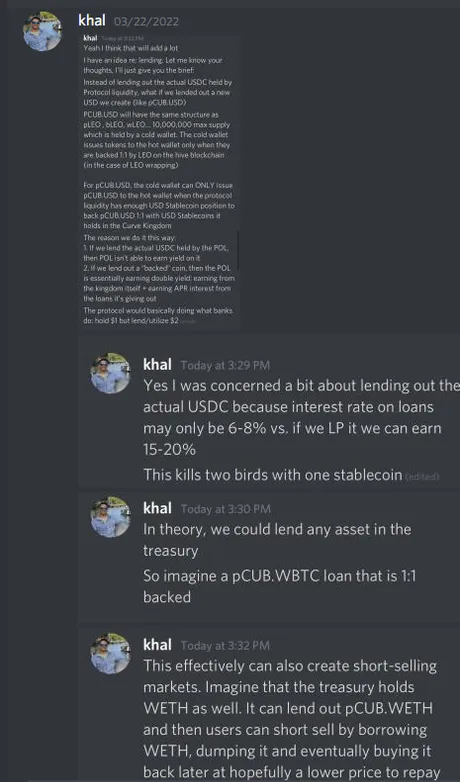
Disclaimer: This is simply game-theory and spitballing options.
None of this private conversion reflects what will actually happen.
Alright again the idea here is that we want to keep the real assets in the Vault where they belong, farming 15%-20% yields, but at the same time be able to loan out these derivative assets and get the best of both worlds. In many regards this is how a fractional reserve bank would try to structure everything to get maximum returns. We just need to figure out what the pitfalls are and if it's secure enough to avoid systemic failure.
Liquidity Keystone
The advantage of loaning USDC out directly from the vault to xpolycub users is that USDC has MASSIVE liquidity pools in every direction. No matter how much one borrows, they'll be able to dump all of it on the market for whatever they want with very little slippage. Conversely, a derivative token's liquidity pool is only as big as the Polycub network provides in a custom LP that we allocate yield to. Big loans will incur high levels of slippage (unless they are being used to add liquidity to the LP).
To peg or not to peg... kek.
Again, I like the idea of not even pegging the derivative to anything but the supply and demand of the free market. There are two reasons to buy and one reason to sell the derivative asset. The first reason to buy is to seed the liquidity pool and farm the yield that's being provided there. The second is to buy the token when it cheap in order to pay back loans at a discounted price. However, most users are going to want to short the derivative asset because that's the entire point. They dump the asset into the LP and pull out whatever it's paired to.
What is it paired to?
There are two options here. We can pair the derivative asset to Polycub itself or the asset we are trying to peg it to (assuming we are trying to peg it to anything). Take pCUB.USDC for example. We could pair it to:
- pCUB/pCUB.USDC
- USDC/pCUB.USDC
There are advantages and disadvantages to both of these listings. pCUB/DERIVATIVE has a HUGE advantage in that both sides of the LP benefit the Polycub ecosystem, and allocating a large amount of yield to this pool would almost certainly create value out of thin thin air because nothing is being wasted and all that value is being conserved and amplified within the ecosystem. Unfortunately Polycub is hyperdeflationary so high yield may be hard come by, but it is also possible that so much money gets sucked into the vault from this fundamental development that yields keep increasing simply from the composable farms that have been constructed.
The problem with the pCUB/pCUB.USDC derivative LP is that USDC has exponentially more liquidity than pCUB. When users go to dump the derivative for the other asset, they are going to receive Polycub if the LP is pCUB/DERIVATIVE. Unless they are going long on Polycub, they would then have to dump the Polycub they just got in exchange for either USDC and ETH, which currently have less than $400k worth of combined assets between both farms. The act of dumping the derivative for pcub, and then dumping pcub for USDC could end up being very costly (depending on the amount) because users would be moving in and out of two relatively illiquid pools in series.
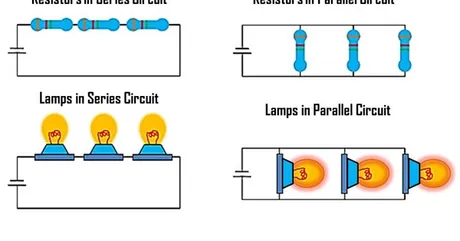
USDC/pCUB.USDC only makes sense if pegged to USDC
Again, I really like the idea of creating a completely non-pegged derivative asset that just floats around at market price, but there are real advantages to doing a pegged token as well. The question is: how would be peg be achieved?
The only thing I could think of is doing what Hive does, which is timelock the conversion. Without the timelock, anyone with a derivative pegged to USDC would just immediately exchange it for USDC and be done with it. But I guess we just came up with another option on the fly which would be to charge some kind of conversion fee to speed up the process (which is something Hive does as well with Hive >> HBD conversions).
Example
You have $2000 worth of xpolycub in a CDP contract ready to be used to mint derivative assets or take loans out of the Vault. You mint 1000 pCUB.USDC tokens. There are four things you can do with these tokens:
- Pair it in the LP and farm the yield provided.
- Dump it into the LP and extract the other token.
- Convert your 1000 tokens into 1000 USDC after a 3.5 day timelock.
- Convert your tokens instantly into 950 USDC (5%) tax.
In this pegged version of the system the derivative asset will always be within 5% price of USDC because anyone can buy tokens from the LP and make the conversion instantly. This 5% fee insures the peg doesn't break lower than 5%, but it also runs the risk of pulling more USDC out of the vault than we wanted to. However, we would hope that it would never break 5% lower anyway so perhaps having the safety net is warranted.
With a 3.5 day timelock it is assumed that arbitrage traders would be buying the derivative off the open market and initiating the conversion to capitalize on the free money being offered. In effect, a tiny bit of value is transferred from impatient users who want instant gratification to those who are willing to wait for the conversion to complete. Obviously these numbers could be changed to whatever we want. It could be a 10% fee for instant conversions or a 7 day timelock. We don't know what the highest +EV numbers are until we test them.
Non-pegged derivative
Again I really like the idea of avoiding the peg entirely. Create an asset out of thin air that has value based soley on the tokenomics of our own system. It's a great opportunity to create the first LP whose yield has two sides that benefit the network (instead of one in the farms or zero in the kingdom/bridge). A POLYCUB/DERIVATIVE LP could be a massive addition even if the derivative asset isn't even pegged. In fact there is a chance that an unpegged asset would be even better than not to the network as a whole.
The biggest problem I see with an unpegged asset is that users won't know if they are getting a good deal or not. When you short USD (aka long crypto), you know exactly what you are getting. You know that you owe back USD and that the value of USD is exponentially more stable than crypto. However, if we borrow a derivative asset that's totally unpegged we might find that when we go to pay it back the price of the derivative has gone higher than we expected it to. The opposite is also true. We might see the derivative price drop 50% and pay back our loan instantly for half the price. It all depends on the current supply and demand of the market. Gamble Gamble.
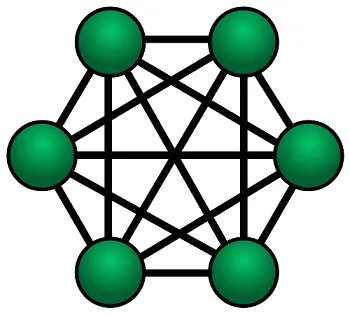
Cross chain assets?
Because these derivative assets are 100% controlled by the LEOfinance ecosystem, it is also possible to wrap them like LEO and send them over to other EVM chains and associated LPs that we've set up there. This kind of utility creates even more complications in the game theory and is perhaps beyond the scope of this post. The safe thing to do is just test native derivative assets before trying to port them around to other chains.
Collateral liquidations.
The biggest concern with all of this is that collateral drops below the threshold and there isn't enough liquidity to buy back what was owed to the Vault. I'm hearing that the Vault will not necessary dump collateral back into what was owed to it, which is exactly what can create these potential Black Swan events. I'm also told that collateral liquidations can act as fuel for the bonding mechanism, so that's another cool development as well that avoids dumping on LPs and creating instability. Rather than dump liquidated collateral onto the market, the vault would offer the collateral to users via bonding in exchange for LP tokens. For me this makes bonding make way more sense than it did before. I think at the end of the day we just need to test what works and what doesn't because this really is cutting edge technology and nobody really knows what they are doing yet.
Conclusion
I actually think Polycub should implement all three versions of loans and derivatives I've described above. There's no reason not to and they all have their own strengths and weaknesses. An unpegged derivative could be paired to a pCUB/DERIVATIVE LP in which yield creates a massive positive feedback loop and requires no tokens from the Vault itself. A pegged pCUB.USDC could be issued with timelocks and/or penalties to get the real thing. But also users should be able to draw tokens directly from the Vault as was originally discussed because that option doesn't incur any slippage for large amounts being borrowed (and more importantly it also doesn't require that yield be allocated to a liquidity pool).
Each of these options would have varying interest rates. Obviously pulling out USDC directly should have the highest interest rate because liquidity pools are the largest and the Vault has the most to lose by allowing that asset to leave the composable farms. A pegged token would have the second highest interest rate as USDC could still be taken from the Vault with conversions. However, it's possible that an unpegged derivative could have very low, zero, or even negative interest rates depending on supply and demand. I believe all three of these options at once would add a lot of value to Polycub and wouldn't be stepping on each other's toes in the process. Each of these solutions is different enough to be worth deploying separately and testing out what works the best.
Return from Synthetic Derivatives to edicted's Web3 Blog
